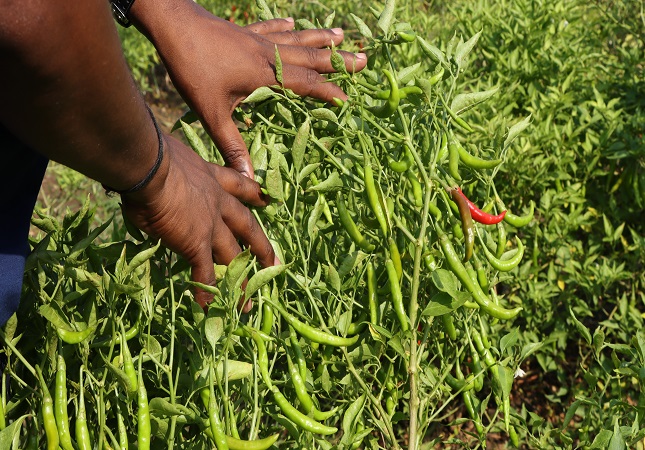Which chili varieties are recommended for cultivation in Tamil Nadu, and which season is considered the best for their growth?
In Tamil Nadu, several chili varieties are suitable for cultivation, depending on the specific requirements and preferences of farmers. Here are some chili varieties commonly recommended for cultivation in Tamil Nadu:
-
Byadagi: Byadagi chilies are popular for their vibrant red color and medium spiciness. They are commonly used in the preparation of traditional South Indian dishes, such as sambar and chutneys. Byadagi chilies have good adaptability to the climate of Tamil Nadu.
-
Guntur Sannam: Guntur Sannam chilies are known for their high spiciness and pungency. These chilies are widely used in the preparation of pickles and spicy dishes. They can withstand the hot and dry conditions of Tamil Nadu and are suitable for cultivation in the region.
-
Kashmiri: Kashmiri chilies are prized for their deep red color and mild to medium heat. They are often used for their vibrant color in dishes like biryanis and curries. Although Kashmiri chilies prefer cooler climates, they can still be cultivated successfully in Tamil Nadu during the winter season.
-
Ellachipur Sannam: Ellachipur Sannam chilies are known for their high heat and pungency. They are commonly used in the production of chili powder and spicy sauces. These chilies thrive in the warm and dry conditions of Tamil Nadu.
-
Arka Lohit: Arka Lohit is a hybrid chili variety developed by the Indian Agricultural Research Institute (IARI). It is known for its high yield, disease resistance, and moderate spiciness. Arka Lohit is suitable for cultivation in Tamil Nadu due to its adaptability to the local climate.
Now, regarding the best season for chili cultivation in Tamil Nadu, it primarily depends on the specific variety and the prevailing climatic conditions. However, chili cultivation is generally recommended during the winter season (October to February) in Tamil Nadu. During this period, the temperature and humidity are relatively moderate, providing favorable conditions for chili growth.
In Tamil Nadu, winter crops benefit from the cooler weather and reduced pest and disease pressure. The availability of sunlight and the absence of excessive rainfall during the winter season create an optimal environment for chili plants to thrive. However, some chili varieties can also be cultivated in other seasons, depending on their adaptability to different climates.
It is important for farmers to consider factors such as temperature, rainfall, and the specific requirements of the chili variety they plan to cultivate to determine the most suitable season for chili cultivation in Tamil Nadu. Consulting with local agricultural experts or horticulture departments can provide further guidance on the recommended chili varieties and the ideal cultivation season in specific regions of Tamil Nadu.

